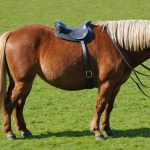Overview of Therapy Dog Certification for Bullmastiffs
Therapy dogs play an essential role in providing emotional support and comfort to individuals in various settings like hospitals, schools, and nursing homes. Therapy dog certification ensures that these canines meet the necessary standards for health, temperament, and behaviour, promising reliable companionship and support. Certification programs usually require the dog to pass a temperament test, demonstrating traits like friendliness and non-aggression, as well as basic obedience training.
Bullmastiffs, with their calm and gentle nature, often excel in fulfilling the responsibilities expected of therapy dogs. These dogs usually have a natural affinity for human interaction, making them excellent companions for therapeutic purposes. They exhibit a balance of loyalty and patience, crucial for providing consistent support to those in need.
Dans le meme genre : Ultimate guide to choosing safe, durable teething toys for your labrador retriever
The training requirements for Bullmastiffs aim to hone their innate qualities, focusing on reinforcing positive behaviours and ensuring they remain composed in diverse environments. Socialisation is key, as it aids in familiarising Bullmastiffs with various people, sounds, and scenarios they might encounter during their therapy sessions. While they are naturally suited for therapy work, structured training and proper certification enhance their effectiveness in therapeutic roles, offering substantial benefits to those they assist.
Key Steps in Training Bullmastiffs for Therapy Work
Training Bullmastiffs for therapy work is a structured process involving specific steps and procedures. Central to this training is the emphasis on consistency and positive reinforcement, which are essential for developing the desired therapy dog traits.
A lire en complément : Ultimate guide to selecting the ideal training collar for your determined akita
Begin with basic obedience training, ensuring the Bullmastiff understands simple commands such as “sit,” “stay,” and “come.” This foundational work is crucial before progressing to more advanced therapy-specific skills. Consistently reward and reinforce each correct behavior, which encourages the dog to repeat the action.
Next is socialization, introducing the Bullmastiff to various environments, people, and other animals. This exposure helps them adapt to different situations and remain calm in the presence of strangers, a trait vital for therapy work.
Incorporating proven training techniques like clicker training can enhance the learning experience. The clicker serves as a precise marker for good behavior, paired immediately with a treat or praise. Tailoring these methods to suit a Bullmastiff’s character is essential, as they respond well to gentle yet firm guidance.
Once these basics are established, gradually introduce therapy dog training procedures such as navigating wheelchairs or remaining composed during unexpected noises, ensuring readiness for therapy environments.
Essential Behavioral Training Techniques
Understanding Bullmastiff behavior is crucial for implementing effective behavioral training techniques. These dogs are known for their protective instincts and loyalty, but without proper training, they can develop undesirable habits.
Basic Obedience Commands
The foundation of obedience training involves basic commands such as sit, stay, and come. Teaching these commands helps establish control and ensures that your Bullmastiff can respond reliably in various situations. It’s important to use positive reinforcement and patience, as these intelligent dogs respond well to rewards and recognition. Consistent practice of these commands will foster a strong bond between owner and dog, enhancing mutual understanding.
Advanced Behavioral Cues
For those interested in therapy work, introducing advanced commands can be beneficial. These include commands specific to therapy tasks, such as focusing on intense emotional support or gentle interactions with people in need. Gradual integration of advanced cues into their routine will tap into their innate intelligence and further their social skills.
Managing Behavioral Issues
Addressing and correcting behavioral problems is a pivotal part of managing a Bullmastiff. Use behavioral training techniques to mitigate issues like aggression or anxiety. This involves identifying triggers, maintaining a calm environment, and reinforcing positive behaviors. Consistent application of these strategies will correct issues and promote a well-adjusted companionship.
Socialization Strategies for Bullmastiffs
Bullmastiffs, with their gentle demeanour, thrive on proper socialization that strengthens their interactions with people and other animals. An effective approach involves gradual exposure to a diversity of environments and situations. Introduce your Bullmastiff to different surroundings, such as parks, urban spaces, and calm household settings. This helps them become accustomed to varying stimuli and adaptability.
Engage them in positive human-animal interactions regularly. These can include inviting friends over or taking the Bullmastiff on calm, controlled visits where they meet new people. The aim is to create stress-free and joyous experiences that foster comfort and trust.
Focusing on social skills helpful for those aiming for therapy dog roles, frequent and varied human contact is vital. This builds confidence and refines their ability to engage calmly in therapeutic settings.
To enhance these social skills and combat anxiety, employ clear and consistent exercises. Commands like “sit” or “stay” in public spaces reinforce discipline while maintaining calmness. Engage in interactive activities, such as play with other dogs or joining socialization classes, to encourage positive and balanced behaviours in diverse environments. These strategy aids will ensure your Bullmastiff is well-rounded and socially competent.
Understanding Certification Requirements
Navigating the therapy dog certification process ensures your Bullmastiff meets all prerequisites for becoming a certified therapy dog. Both local and national organizations hold specific standards, and familiarizing oneself with the differences is key.
National and Local Certification Organizations
Numerous organizations handle therapy dog certifications, such as the American Kennel Club and Therapy Dogs International. Each group prescribes its own certification prerequisites, emphasizing obedience, temperament, and social skills.
Testing for Therapy Dogs
Bullmastiffs, renowned for their gentle disposition, undergo an array of tests during the certification process. These evaluations focus on their ability to remain calm and friendly in various environments. A therapy dog must demonstrate trustworthy behavior and respond well to cues, even in bustling or stressful settings.
Documentation and Requirements
Preparation is crucial for a seamless certification journey. You’ll need to gather essential documents, including health records and vaccination certificates, before applying. It is also advisable to undergo preliminary training and evaluations to ensure your Bullmastiff is well-prepared for official testing for therapy dogs. These steps are foundational in proving your dog meets the criteria set by the certification body, facilitating the approval process.
Practical Exercises for Therapy Dog Training
Training a therapy dog involves structured exercises that equip them for their roles. Bullmastiffs, known for their loyalty, require specific therapy dog training exercises to harness their temperament for therapeutic purposes.
Basic Practical Exercises
Starting with basic exercises is essential for Bullmastiffs. Practical training methods like obedience training, including sit, stay, and recall commands, lay the foundation. These commands enhance the dog’s ability to follow directives in therapy settings. Introducing Bullmastiff activities such as controlled leash walking and socialization with various people and environments is key to building confidence and adaptability.
Advanced Practical Exercises
Advanced exercises challenge the Bullmastiff further. Incorporate therapy dog training exercises like deep pressure therapy, where the dog learns to gently apply pressure to comfort individuals. Practicing calmness in noisy or busy environments prepares the dog for different therapy scenarios. Reinforcement through repetition of these training methods sharpens their skills and responsiveness.
Situational Training Scenarios
Simulating real-world interactions is crucial. Situational scenarios that mimic therapy dog interactions, involving diverse settings such as hospitals or nursing homes, help prepare the dog. Enacting scenarios like encountering patients with assistive devices ensure the Bullmastiff remains collected and reliable. These training methods empower the therapy dog to deliver support effectively, promoting emotional wellness.
Success Stories and Testimonials
Bullmastiff therapy success stories highlight the profound impact these gentle giants have on individuals and communities. In one memorable case, a Bullmastiff named Max brought comfort to a local hospital’s pediatric ward. As a therapy dog, Max eased the children’s anxiety, fostering a more positive environment. The presence of such therapy dogs has been credited with reducing stress levels and promoting emotional healing.
Real-life experiences abound where Bullmastiffs have significantly transformed lives. One mother recounts how her son, initially withdrawn due to social anxiety, blossomed into a sociable teen after regular interactions with a therapy Bullmastiff. The dog became a friend and confidant, offering unconditional support.
Moreover, insights from trainers underscore the breed’s inherent suitability for therapy work. Known for their calm demeanour, Bullmastiffs connect effortlessly, creating meaningful bonds. Families who host these therapy dogs often witness not only individual growth but an overall uplift in the household mood and dynamics.
Testimonials collected from various sources solidify the notion that Bullmastiffs are more than just pets—they are pivotal members of therapy teams positively shaping lives. Their quiet strength and stable presence enhance their role in therapeutic settings, illustrating undeniable benefits and success.
Resources and Additional Support
Embarking on the journey of therapy dog training can be both exciting and challenging, especially for Bullmastiff owners. Thankfully, there are training resources available to guide you along the way. Reputable programs and workshops offer detailed outlines to help you and your Bullmastiff succeed. These programs often include practical sessions, addressing specific needs related to therapy certification, while fostering a deep understanding of animal behaviour and communication.
Online platforms provide a wealth of therapy dog training guides for ongoing education. Many of these resources are created by professionals well-versed in canine behaviour, offering insights into effective training methods. This makes them an excellent addition to any Bullmastiff owner’s toolkit, offering flexibility to learn at your own pace.
Furthermore, Bullmastiff support networks can be invaluable. Connecting with fellow Bullmastiff owners, whether through forums or local groups, creates a supportive environment where experiences and advice are shared freely. Many owners find these networks helpful, providing essential tips for managing the unique characteristics of Bullmastiffs in therapy roles.
Combining structured training programs, rich online resources, and robust support networks ensures a comprehensive approach to preparing your Bullmastiff for the rewarding role of a therapy dog.











